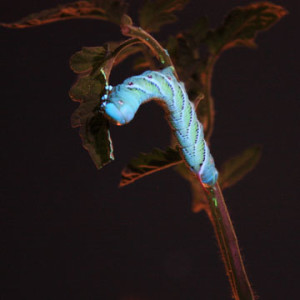

Hand-picking the worms in home gardens often provides satisfactory control.There are typically two generations each summer, and larvae of the second generation will overwinter as pupae. Fully grown larvae will drop from plants and pupate in the soil. The caterpillars hatch and usually pass through five larval stages (instars) in about one month. After mating, females lay small, pearl-like eggs individually on tomato foliage and leaves of other hosts (pepper, potato, eggplant, and some weeds of the nightshade family). The adult moths emerge in mid to late spring. Hornworms overwinter as pupae in the soil. In addition to tomatoes, hornworms may also feed on eggplant, potatoes, and peppers. Another indication hornworms are present is the accumulation of their large, black droppings (frass) on plants and the ground. If left unchecked, they may destroy the plant. Often, they remain undetected until considerable feeding has occurred. They are often difficult to find because their color blends in or camouflages with tomato foliage background. They can consume large quantities of foliage, and 1 to 2 worms can defoliate a five-foot tomato plant in less than three days. The tobacco hornworm is the more commonly seen of the two. Tomato hornworm caterpillars have eight V-shaped marks on each side, and their horns are straighter and blue-black in color.The tomato hornworm ( Manduca quinquemaculata) is known as the five-spotted hawkmoth.




 0 kommentar(er)
0 kommentar(er)
